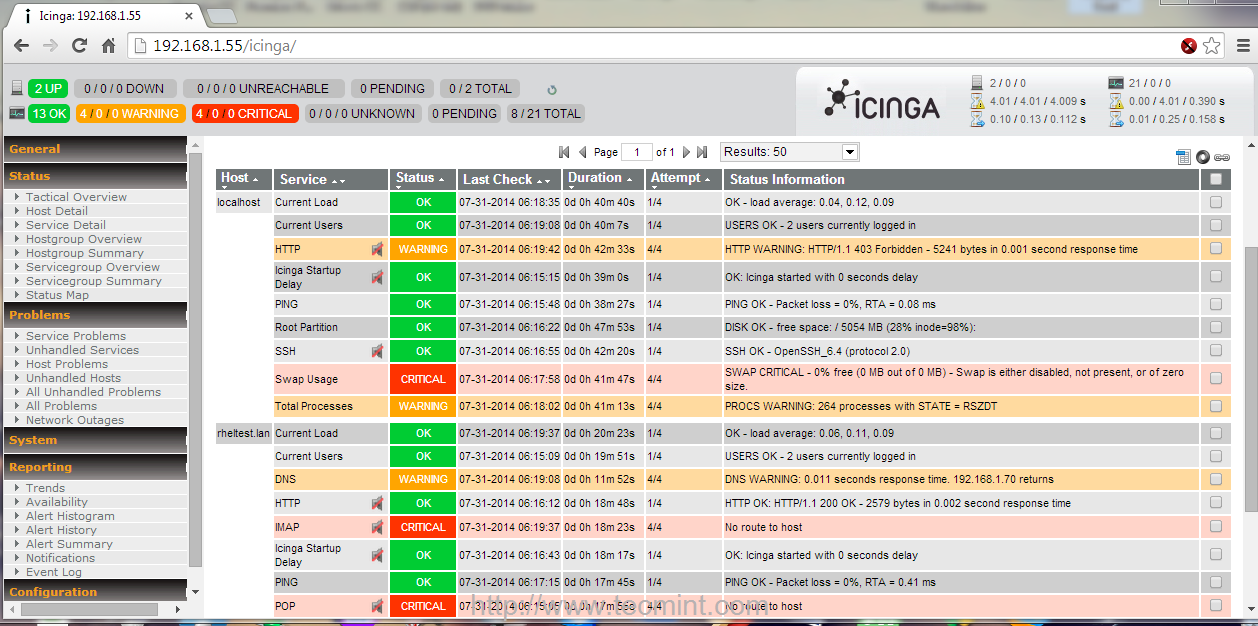
:~/softs/pushgateway/pushgateway-0.8.0.linux-amd64$ > tar xvzf pushgateway-0.8.0.Īs a result, your Pushgateway should start as background process. Now that you have the archive, extract it, and run the executable available in the pushgateway folder.
#Monit linux install#
In order to install Pushgateway, run a simple wget command to get the latest binaries available. Now that you have a better idea of what’s going on in our application, let’s install the different tools needed. This is why we have to use the Pushgateway designed for short-lived jobs, Pushgateway will cache metrics received from the script and expose them to Prometheus. In our case, the bash script has a very tiny lifespan and it doesn’t expose any HTTP instance for Prometheus.
#Monit linux series#


In this case, running a top command would give you zero information as it would be too late for you to catch who’s causing performance issues on your system. The main reason would be system availability: in case of a system overload, you may have no physical or remote access to your instance.īy externalizing process monitoring, you can analyze what’s causing the outage without accessing the machine.Īnother reason is that processes get created and killed all the time, often by the kernel itself. Knowing that those two commands exist, why would we want to build yet another way to monitor processes? Htop also provides gauges that reflects current system usage. Htop provides the same set of functionalities (CPU, memory, uptime.) as top but in a colorful and pleasant way. The top command is already pretty readable, but there is a command that makes everything even more readable than that: htop. This command is widely used among sysadmins and is probably the first command run when a performance bottleneck is detected on a system (if you can access it of course!)
#Monit linux full#
Top provides a full overview of performance metrics on your system such as the current CPU usage, the current memory usage as well as metrics for individual processes. When it comes to process monitoring for Unix systems, you have multiple options. Now that we have an overview of everything that we are going to learn, and without further due, let’s have an introduction on what’s currently existing for Unix systems.
#Monit linux how to#

a – Retrieving the current overall CPU usage.Building An Awesome Dashboard With Grafana.Building a bash script to retrieve metrics.


 0 kommentar(er)
0 kommentar(er)
